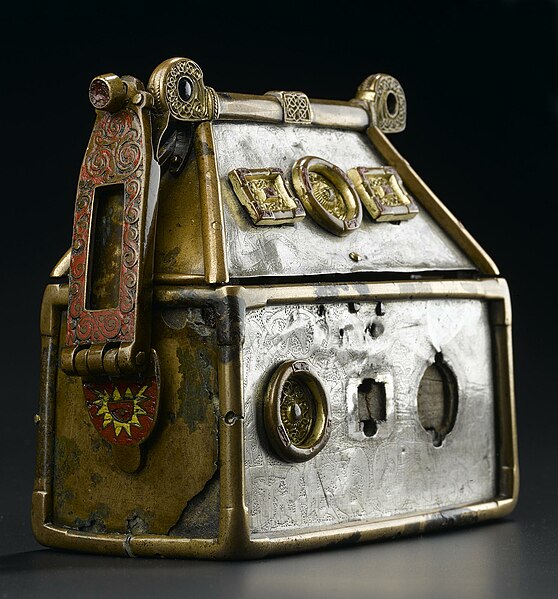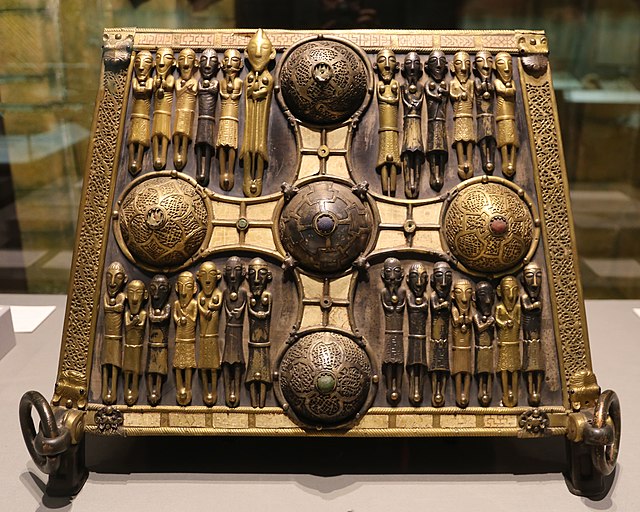House-shaped shrine are early medieval portable metal reliquary formed in the shape of the roof of a rectangular building. They originate from both Ireland and Scotland and mostly date from the 8th or 9th centuries. Typical example consist of a wooden core covered with silver and copper alloy plates, and were built to hold relics of saints or martyrs from the early Church era; a number held corporeal remains when found in the modern period, presumably they were parts of the saint's body. Others, including the Breac Maodhóg, held manuscripts associated with the commemorated saint. Like many Insular shrines, they were heavily reworked and embellished in the centuries following their initial construction, often with metal adornments or figures influenced by Romanesque sculpture.
The Monymusk Reliquary, early 8th century, National Museum of Scotland
Saint Manchan's Shrine, 12th-century
Side view of Saint Manchan's Shrine, 12th century
19th c drawing of one of the gabled sides of the Lough Erne Shrine
The Breac Maodhóg is a relatively large Irish house-shaped reliquary, today in the National Museum of Ireland. It is thought to date from the second half of the 11th century, and while periods as early as the 9th century have been proposed, the later dating is believed more likely based on the style of its decoration.
1867 drawing by Margaret Stokes
Detail from the 1867 drawings by Margaret Stokes
Detail
Detail








